Fish account for up to 70% of animal protein consumption in the country
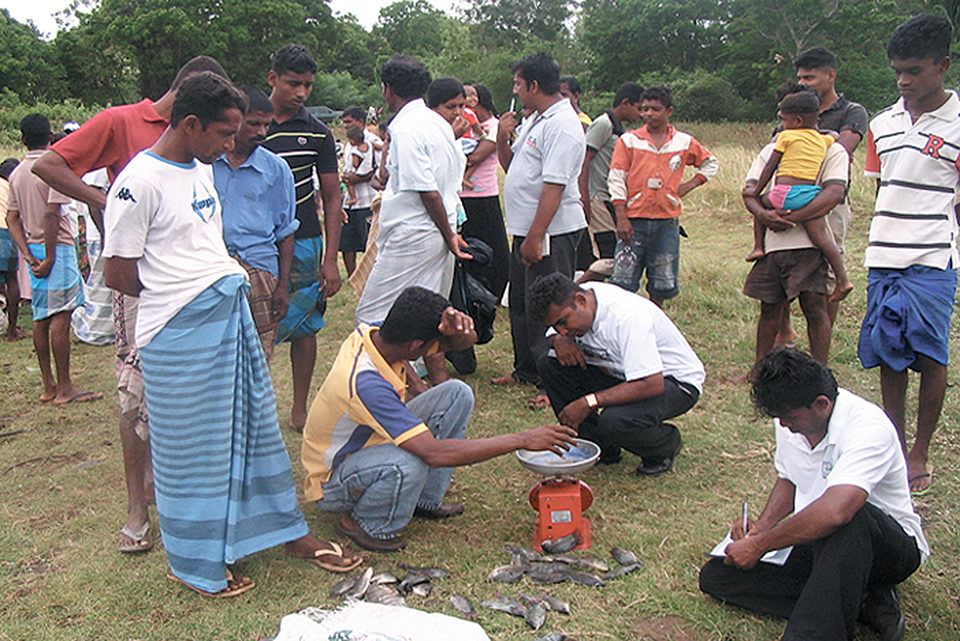
The genetically improved farmed tilapia (GIFT) strain of Nile tilapia (Oreochromis niloticus) has been developed by the WorldFish Center (formerly known as the International Center for Living Aquatic Resources Management) with assistance from national research partners in the Philippines and Norway (1988 to 1996) and Malaysia (2000 to present). After more than 10 generations of selection, the fish show fast growth, high survival rates, high fillet weights, good flesh quality, disease resistance and good adaptation to various farming systems.
To date, the GIFT strain has been formally disseminated to 14 national government agencies, and it is being widely cultured in many Asian and Latin American countries. In the Philippines, GIFT and GIFT-derived strains account for about 75 percent of total tilapia production.
Broodstock development program
Recently, the WorldFish Center has been implementing a broodstock development program in collaboration with the National Aquaculture Development Authority (NAQDA) of the Ministry of Fisheries and Aquatic Resources of Sri Lanka.
One component of this project consisted of the introduction and further improvement of the performance of the GIFT strain in Sri Lanka. The breeding program involved the transfer of 50 GIFT families with 20 to 30 fish per family from the latest generation of selection in Malaysia to NAQDA’s Dambulla Breeding Center.
A cohort breeding design, in combination with rotational mating of males, has been practiced since 2007. So far, the GIFT fish have undergone four generations of selection for increased harvest weight in Sri Lanka.
Performance
In 2009 and 2010, the authors conducted on-farm field tests to evaluate the performance of GIFT fish relative to the locally available tilapia under three prevailing culture environments: earthen ponds, seasonal tanks and minor perennial tanks. Across the environments, the GIFT strain had about 112 percent greater growth than the local strain (Fig. 1).
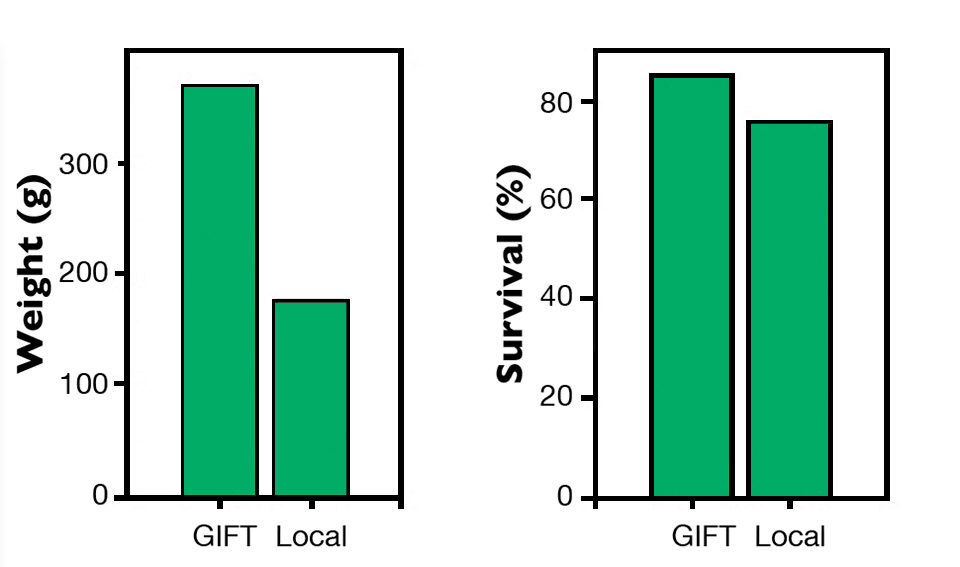
Survival from stocking to harvest was also significantly greater in GIFT tilapia – 85.4 versus 75.5 percent for the local fish. A similar result was found under cage culture in Vietnam, where the GIFT strain reportedly had 70 percent greater growth rate than farmers’ existing stock.
One of the concerns often expressed about improved strains such as GIFT is that they may perform well in favorable environments but not in harsher ones. The environments the authors have studied ranged from relatively good (station and farm ponds) to intermediate (seasonal tanks) and rather harsh (perennial reservoirs). GIFT performed well above the local strains in all cases.
Dissemination to producers
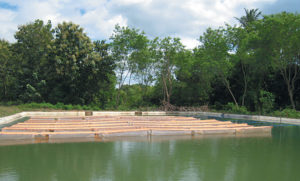
Because of the GIFT strain’s superior growth and survival rate, the authors designed a national breeding structure to multiply and disseminate the improved fish to end users in Sri Lanka. The classic hierarchical structure includes three tiers: national breeding centers, where the nucleus is kept and the genetic improvement program is implemented; a network of hatcheries that receive broodstock from the nucleus, multiply them and disseminate fingerlings to producers; and the production level of farmers growing out fish to market weights.
Thus, the improved fish resulting from the breeding program are being multiplied and transferred to a network of hatcheries in the country. They in turn produce high-quality seed and distribute it to farmers and community-based organizations. In some instances, fry are also distributed directly from the nucleus to fish producers. Currently, about 30 hatcheries have received the improved fish. A total of 230 community-based organizations and farmers have received GIFT.
The introduction of the GIFT strain to Sri Lanka has had a large impact on farmers, increasing their income through the culture of faster-growing and better-surviving fish. The GIFT strain is now preferred to the local stocks in culture systems across the country.
As a consequence, the project is expected to have positive social and economic impacts on the communities, improving the living standards of poor people and contributing to gender equality via the creation of employment for women in rural areas of Sri Lanka, where the percentage of women involved in the sector is 10 percent.
Perspectives
The GIFT project has contributed to the increases in inland fisheries and aquaculture in Sri Lanka. In 2000, only 10 percent of the country’s fish production came from inland fisheries and aquaculture. The proportion of production increased to 13.5 percent in 2010. The increase in freshwater fish production was from 36,700 to 51,390 metric tons during the same period.
The development of aquaculture in Sri Lanka is particularly important, since fish account for up to 70 percent of the total consumption of animal protein in the country. There is high demand in rural and urban markets for freshwater fish to alleviate malnutrition and poverty, especially in the inland areas of Sri Lanka.
(Editor’s Note: This article was originally published in the November/December 2011 print edition of the Global Aquaculture Advocate.)
Now that you've reached the end of the article ...
… please consider supporting GSA’s mission to advance responsible seafood practices through education, advocacy and third-party assurances. The Advocate aims to document the evolution of responsible seafood practices and share the expansive knowledge of our vast network of contributors.
By becoming a Global Seafood Alliance member, you’re ensuring that all of the pre-competitive work we do through member benefits, resources and events can continue. Individual membership costs just $50 a year.
Not a GSA member? Join us.
Authors
-
Nguyen Hong Nguyen
The WorldFish Center
Jalan Batu Maung 11960 Batu Maung
Penang, Malaysia -
Raul W. Ponzoni
The WorldFish Center
Jalan Batu Maung 11960 Batu Maung
Penang, Malaysia -
Jayantha Chandrasoma
National Aquaculture Development Authority of Sri Lanka
Pelawatte, Battaramulla, Sri Lanka -
H.M.V.K.P.B. Herath
National Aquaculture Development Authority of Sri Lanka
Pelawatte, Battaramulla, Sri Lanka -
Kamal Wathurawadu
National Aquaculture Development Authority of Sri Lanka
Pelawatte, Battaramulla, Sri Lanka
Tagged With
Related Posts

Health & Welfare
10 paths to low productivity and profitability with tilapia in sub-Saharan Africa
Tilapia culture in sub-Saharan Africa suffers from low productivity and profitability. A comprehensive management approach is needed to address the root causes.
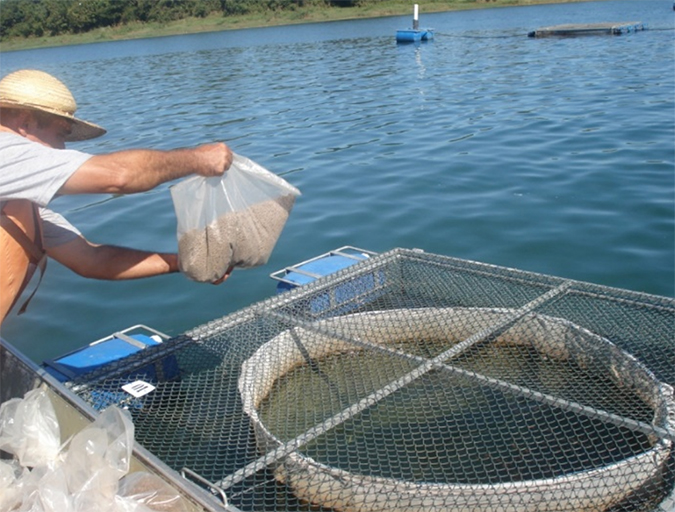
Health & Welfare
Aiding gut health with a natural growth promotor
A study with Nile tilapia conducted in commercial production cages in Brazil showed the potential – in the absence of major disease threats – of a commercial, natural growth promotor that modulates the microbiota (inhibiting growth of pathogenic bacteria and promoting growth of beneficial bacteria) and inhibits quorum sensing.
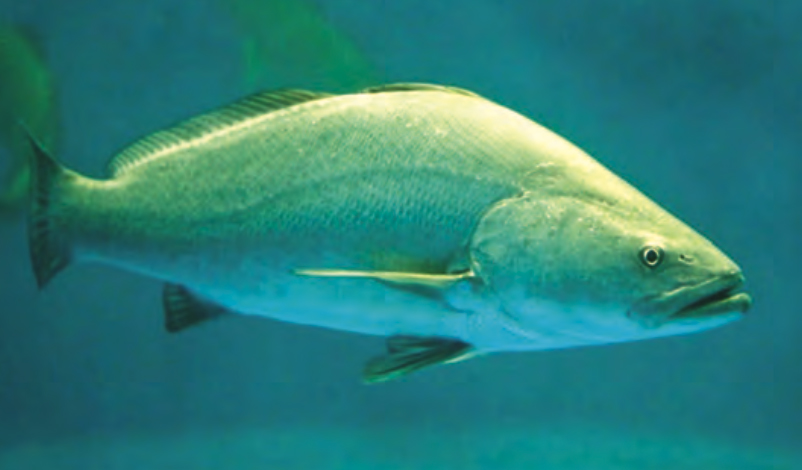
Responsibility
Aquaculture gives endangered totoaba a fighting chance
The tenuous fate of a pint-sized porpoise, the critically endangered vaquita, is linked to a fish targeted by poachers fueling China’s appetite for maws. The vaquita remains in peril, but aquaculture presents some hope for the totoaba.
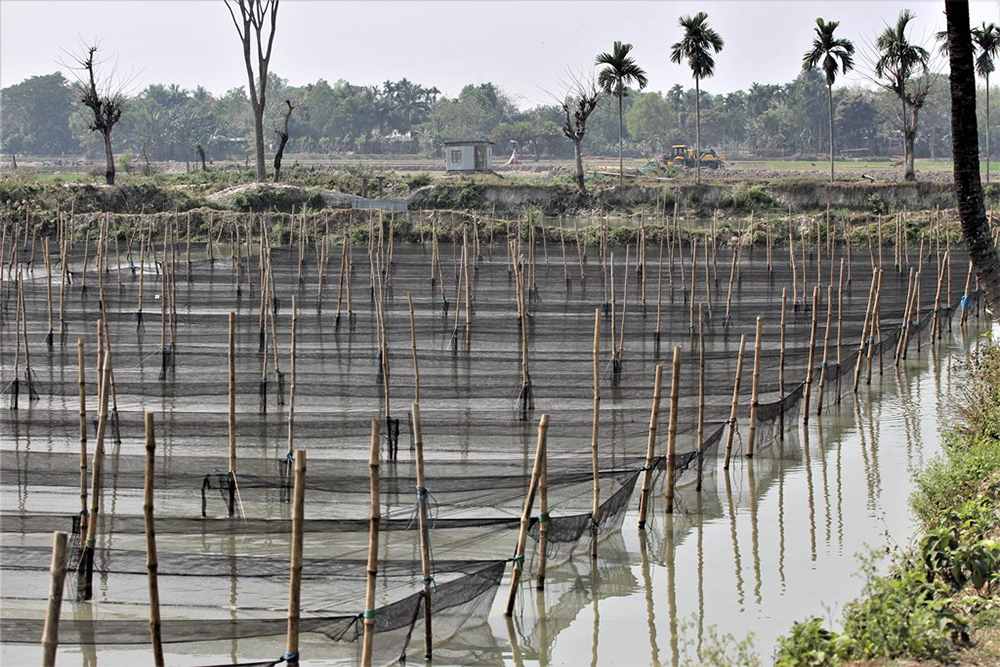
Intelligence
Bangladesh’s tilapia aquaculture industry shows resilience
Tilapia aquaculture in Bangladesh has developed significantly since 1999, based on the Genetically Improved Farmed Tilapia (GIFT) strain of Nile tilapia (Oreochromis niloticus) introduced from Malaysia and on the significant genetic improvement research work by the Bangladesh Fisheries Research Institute (BFRI).



